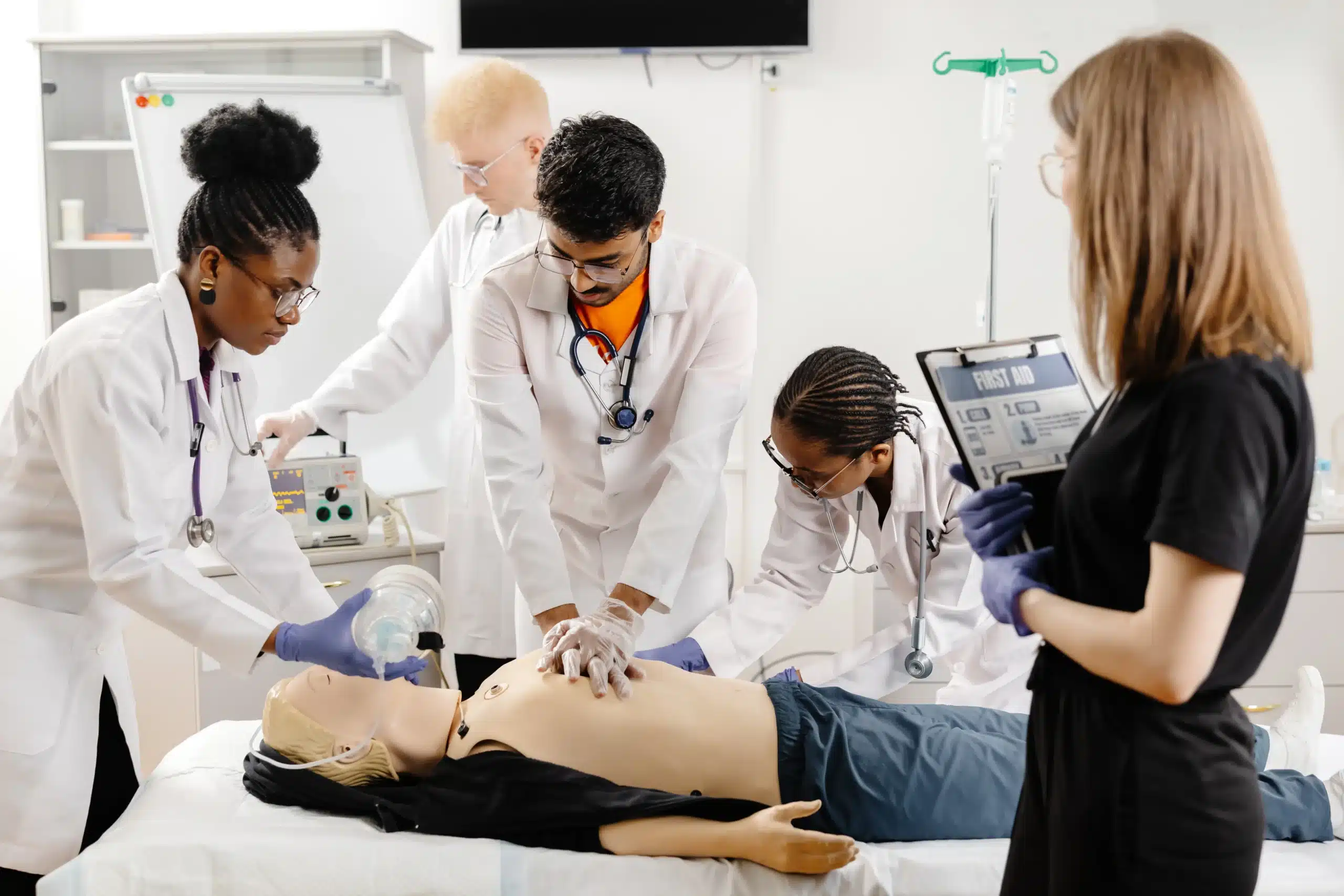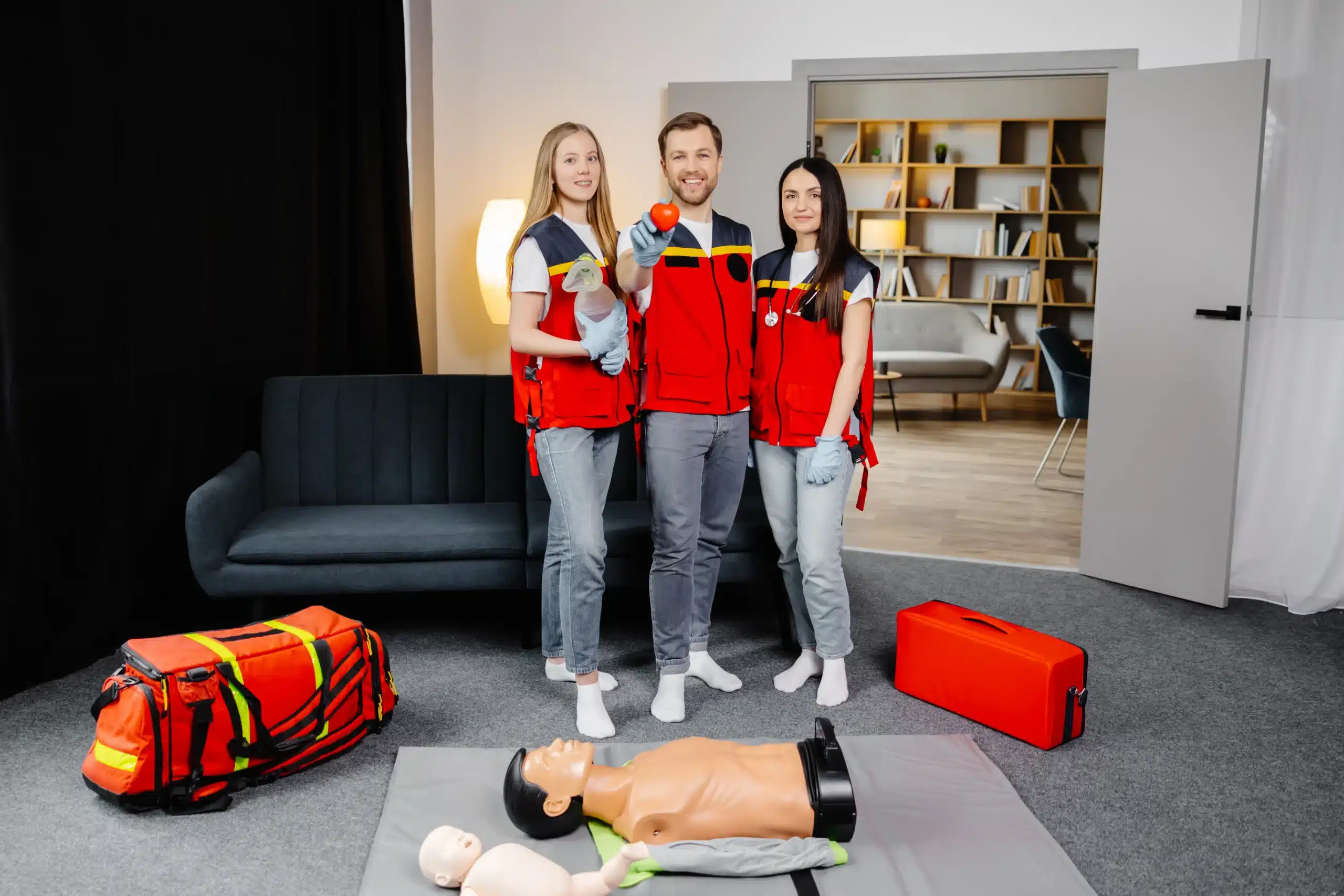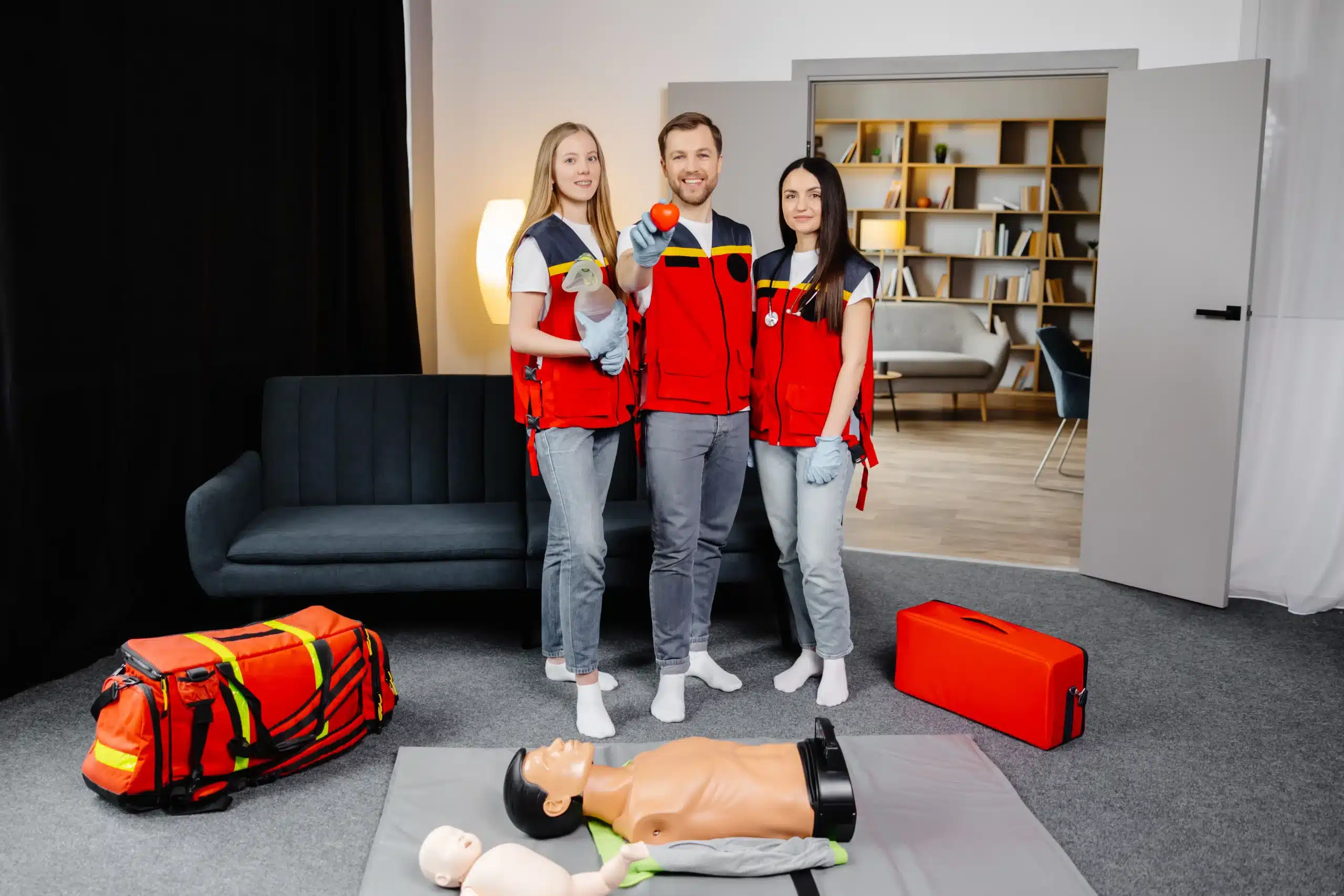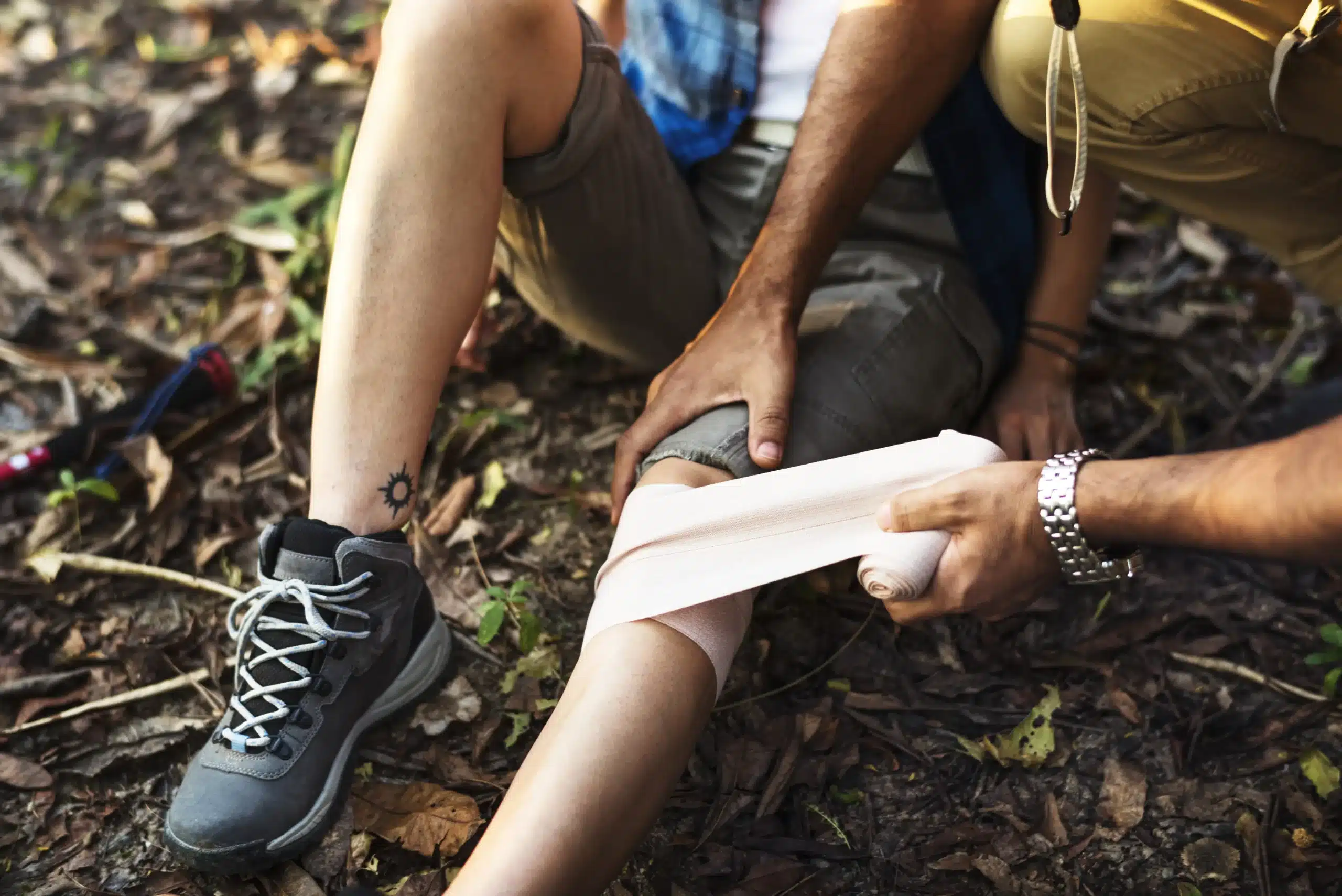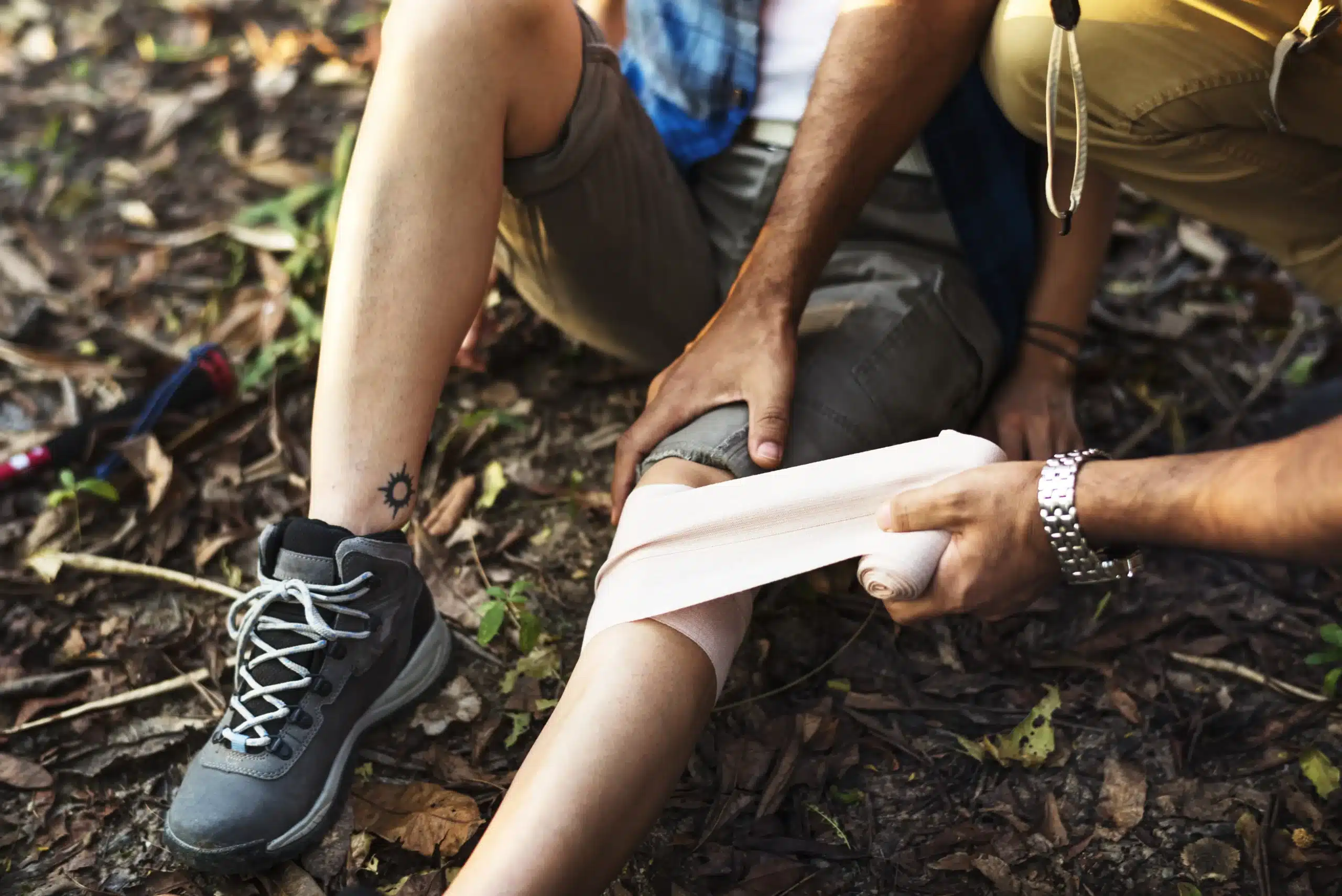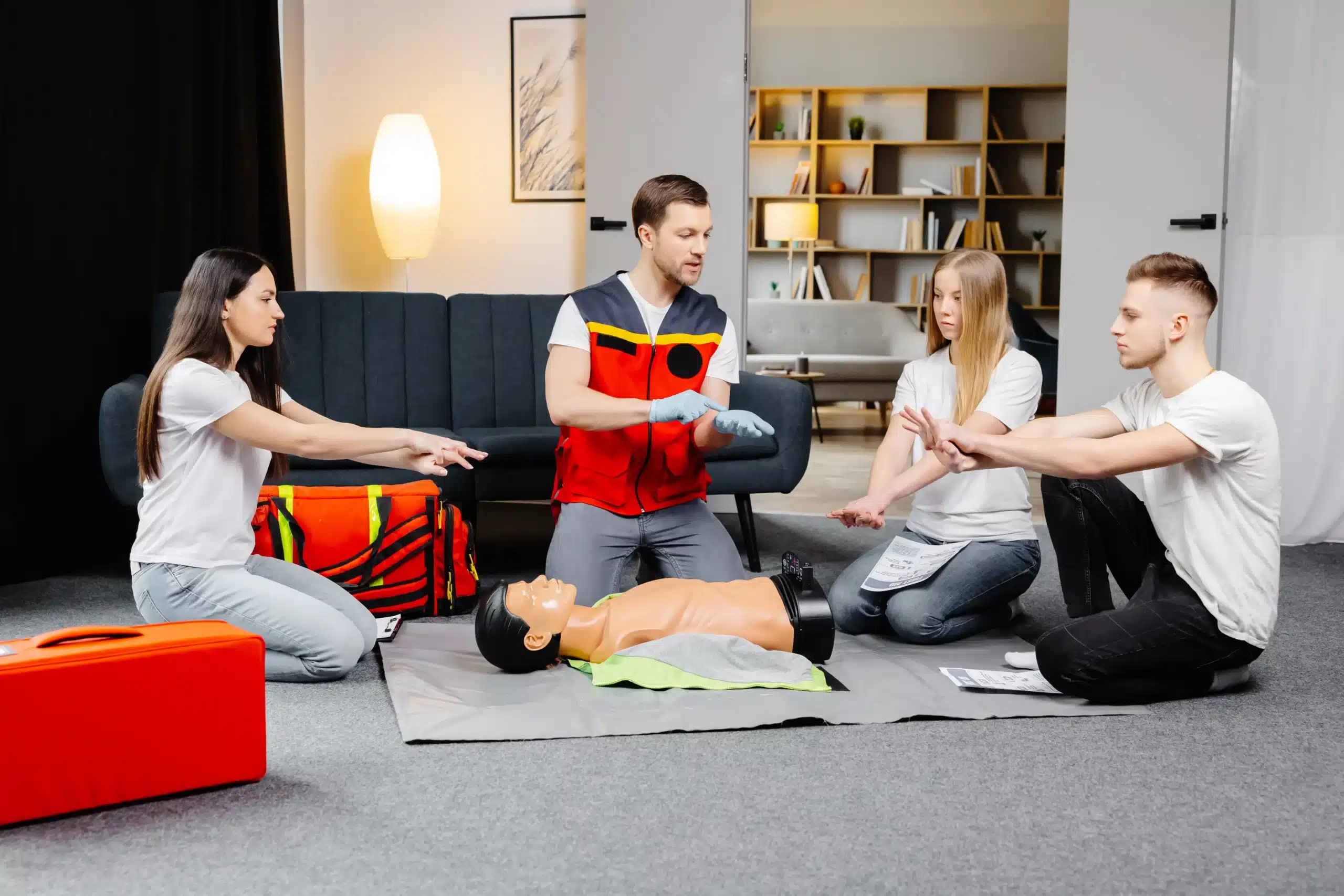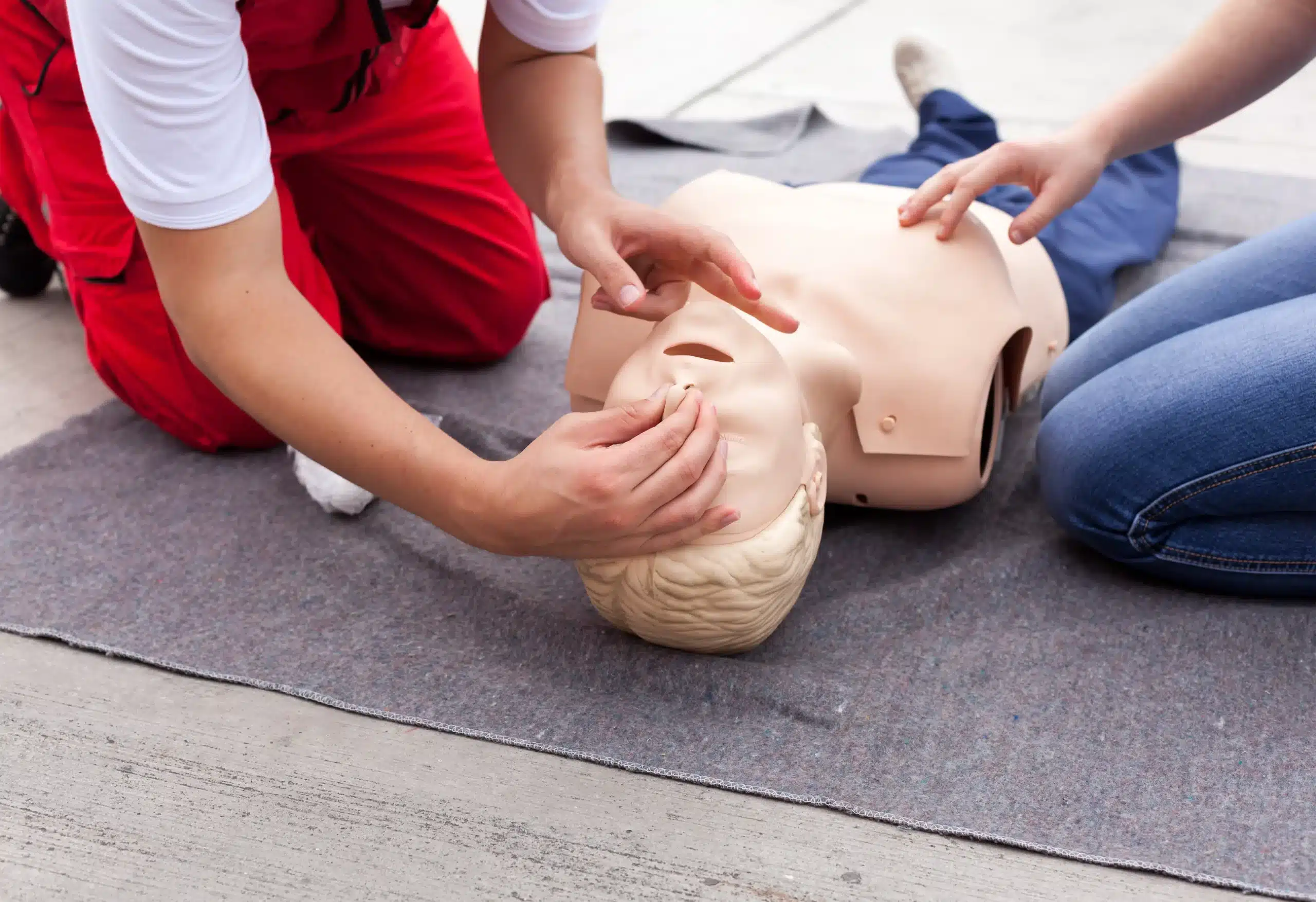Empowering yourself with life-saving skills is one of the most valuable things you can do. Basic Life Support (BLS) certification provides the training you need to respond effectively in medical emergencies, giving you the confidence to act quickly and potentially save a life. This guide covers everything you need to know about BLS certification, from the core skills taught in the course to the different certification options available. Whether you’re a healthcare professional, a concerned citizen, or searching for “BLS certification near me,” we’ll help you understand the importance of BLS and guide you through the process of finding the right training program. We’ll also discuss the career benefits of BLS certification and how to maintain your skills to ensure you’re always prepared.
Key Takeaways
- BLS certification equips you with essential life-saving skills: This training covers CPR, AED use, and other vital techniques, empowering you to respond effectively during medical emergencies.
- Find a BLS course that fits your lifestyle: Explore various options, including in-person, online, and blended learning formats, to find a course that accommodates your schedule and learning preferences.
- Stay current with your BLS skills: Renew your certification every two years and practice regularly to maintain proficiency and confidence in your ability to provide effective care.
What is BLS Certification & Why Do You Need It?
BLS, or Basic Life Support, certification teaches essential life-saving skills to healthcare providers and anyone who wants to respond effectively to medical emergencies. This training covers core techniques like CPR (Cardiopulmonary Resuscitation) and how to use an AED (Automated External Defibrillator). Whether you’re a medical professional or simply want to be prepared for unexpected situations, BLS certification gives you the confidence and skills to act quickly and potentially save a life. Consider getting your BLS certification to be prepared for emergencies.
Key BLS Training Components
BLS training covers a range of essential skills. You’ll learn how to perform high-quality CPR for adults, children, and infants, including how to recognize the signs of a heart attack and provide appropriate care. The course also teaches you how to use an AED safely and effectively. Beyond these core skills, BLS training emphasizes effective teamwork and problem-solving in high-pressure emergency situations. These classes often include training on relieving choking and other airway obstructions. This comprehensive approach ensures you’re well-prepared to handle various medical emergencies.
BLS Importance for Healthcare Professionals & First Responders
For healthcare professionals and first responders, maintaining current BLS certification is crucial. It’s often a mandatory requirement for employment and ensures you’re up-to-date on the latest life-saving techniques and protocols. Regular BLS recertification reinforces these essential skills and keeps you prepared to provide the highest quality of care in emergencies. This commitment to ongoing training contributes to better patient outcomes and a safer healthcare environment. Staying current with your BLS certification demonstrates your dedication to providing effective, up-to-date care.
Find BLS Certification Courses Near You
Finding the right BLS certification course requires a little research. Think about factors like location, schedule, and budget as you explore your options. If you’re in Napa, American Canyon, or Vallejo, you have several convenient choices.
Local Training Centers & Hospitals
Hospitals and clinics often offer BLS certification courses for both their staff and the wider community. Check with hospitals in your area, like Adventist Health St. Helena or Queen of the Valley Medical Center, to see what programs they offer. Dedicated training centers are another great option. Safety Training Seminars, for example, provides comprehensive BLS training in a convenient Napa location.
Online Search Tools & Resources
A quick online search can help you find BLS classes near you. Use specific terms like “BLS certification near me” or “BLS classes in Napa.” This helps filter results and pinpoint local providers. Consider factors like course format (online, in-person, or blended), cost, and the training center’s reputation. Our guide to finding BLS training offers helpful tips for evaluating different programs.
Organizations Offering BLS Certification
Several well-known organizations offer BLS certification. Here are a few of the most common:
American Heart Association (AHA)
The American Heart Association sets the standards for CPR and emergency cardiovascular care. They offer a variety of resources and training programs, including BLS certification. Safety Training Seminars offers a range of AHA-certified courses, including BLS, right here in Napa.
American Red Cross
The American Red Cross also provides BLS training for individuals and organizations. They offer various course formats to fit different learning styles and schedules.
National Safety Council
The National Safety Council offers a variety of safety training programs, including BLS certification. You can use their website to find courses in your area.
Community Colleges
Many community colleges offer BLS certification courses as part of their continuing education programs. This can be a cost-effective way to get certified. Napa Valley College may have programs that fit your needs.
Compare BLS Certification Formats
Choosing the right BLS certification format depends on your learning style, schedule, and budget. Let’s break down the pros and cons of each option so you can make the best decision for your needs.
In-Person Training: Hands-on Experience
In-person BLS training offers a structured learning environment with direct interaction with an instructor. This format emphasizes hands-on practice and real-time feedback, which is essential for mastering crucial skills like CPR, using an AED, and providing first aid. You’ll also have the opportunity to ask questions, work with other students, and learn from their experiences. If you thrive in a traditional classroom setting and value face-to-face instruction, in-person training might be the best fit. Safety Training Seminars offers in-person BLS training right here in Napa, giving you the hands-on experience you need to feel confident in your skills.
Online Courses: Flexibility and Convenience
Online BLS courses offer unparalleled flexibility and convenience. You can learn at your own pace, revisit materials as needed, and fit the training around your busy schedule. Many online courses use interactive modules and simulations to keep you engaged and reinforce learning. ACLS.com is one example of a provider offering this type of engaging online training. This format is ideal for those who prefer self-paced learning or have limited time for traditional classes. However, keep in mind that online courses typically require you to schedule a separate in-person skills evaluation session to complete your certification.
Blended Learning: Combining Online and In-Person
Blended learning combines the best of both worlds. You’ll complete the cognitive portion of the course online, enjoying the flexibility and convenience of self-paced learning. Then, you’ll attend a shorter, in-person skills session to practice and demonstrate your proficiency under the guidance of an instructor. The American Red Cross offers this blended learning format, providing a balanced approach that caters to various learning styles. Safety Training Seminars can also help you explore different BLS training formats, including blended learning, to find the right fit. This option is a great choice if you want the flexibility of online learning but also value the hands-on practice and feedback of in-person instruction.
BLS Certification Costs & Discounts
Knowing the price range for BLS certification and how to find discounts helps you budget effectively.
Average Price Ranges
BLS certification costs vary based on location, training provider, and course format. Generally, expect to pay between $50 and $100 for BLS certification. Prices in Napa County may differ. Safety Training Seminars offers competitive pricing, so check our website for the most up-to-date pricing on BLS certification in Napa. BLS training provides essential life-saving skills, from CPR and AED use to airway management. BLS equips you to respond confidently in medical emergencies, whether you’re a healthcare professional or a concerned citizen.
Factors Affecting Cost
Several factors influence the total cost of your BLS certification. Course format—online, in-person, or blended—often affects pricing. In-person classes typically include hands-on training and personalized instruction, which can mean a higher cost. Online courses offer flexibility and convenience, and may be more budget-friendly. Consider the training center’s reputation and instructor qualifications when selecting a BLS provider. Safety Training Seminars prioritizes both excellent instruction and affordable pricing for our Napa community.
Find Discounts and Promotions
Before committing to a BLS course, explore potential discounts. Many organizations offer promotions. Some providers have specific promo codes for CPR and BLS courses. You can also find discounts through various healthcare organizations, some of which provide options for community groups. Students pursuing healthcare careers should check with training providers for student discounts on certification courses. Inquire about applicable discounts when you register for your BLS class. At Safety Training Seminars, we’re committed to making life-saving skills accessible and affordable. Contact us to learn about current discounts and promotions on BLS certification courses in Napa.
Understand the BLS Certification Process
Getting BLS certified involves a structured process designed to equip you with the essential skills and knowledge to respond effectively in medical emergencies. Here’s a breakdown of what you can expect:
Course Duration and Content
BLS training typically takes about 4.5 hours to complete. The curriculum covers essential life-saving skills, from CPR and AED use to airway management. Whether you’re a healthcare professional or preparing for a job, BLS training equips you to respond confidently in medical emergencies. You’ll learn how to recognize life-threatening situations and provide prompt, effective care, significantly enhancing survival chances during critical emergencies like cardiac arrest. This practical guide offers further details about BLS training and its benefits.
Exam Requirements and Skills Assessment
BLS certification involves a hands-on, in-person skills session with an instructor. This practical exam allows you to demonstrate your proficiency in the techniques learned throughout the course. The American Red Cross, for example, uses this combination of online learning and in-person evaluation. It’s important to remember that both CPR and BLS certifications are valid for two years and require recertification, so plan to refresh your skills and knowledge. Recertification courses are readily available.
Practical Application and Teamwork
BLS training emphasizes the practical application of skills and the importance of teamwork in emergencies. You’ll learn how to assess a scene, communicate effectively with team members, and coordinate efforts to provide the best possible care. The Red Cross highlights these aspects in their training, preparing participants to handle real-world emergencies with confidence. This focus on practical application and teamwork ensures you’re not just learning the steps but also understanding how to apply them effectively under pressure.
Choose a Reputable BLS Certification Provider
Finding the right BLS certification provider is crucial for a high-quality learning experience. It’s important to consider several key factors to ensure your certification meets industry standards and equips you with the skills you need.
Accreditation and Recognition
A reputable BLS provider should be accredited by a recognized organization like the American Heart Association (AHA) or the American Red Cross. This accreditation validates the quality of the training program. Check if the provider is affiliated with nationally recognized organizations or if their certifications are widely accepted in your field. For example, if you’re a healthcare provider, ensure the certification aligns with your workplace or licensing board requirements. Consider factors like course format (online, in-person, or blended learning), cost, and the training center’s reputation. A well-regarded provider will have positive reviews and testimonials from past students.
Instructor Qualifications
The instructors’ expertise directly impacts the quality of your training. Look for certified instructors with extensive experience in healthcare and emergency response. They should possess strong communication skills and a genuine passion for teaching. A good instructor can make all the difference in your understanding and retention of the material. They should be able to clearly explain complex concepts, demonstrate techniques effectively, and provide helpful feedback. Check the provider’s website or contact them directly to learn more about their instructors’ credentials and experience.
Course Materials and Resources
High-quality course materials are essential for effective learning. BLS courses should cover the latest guidelines and best practices in CPR and basic life support. Materials should be up-to-date, comprehensive, and easy to understand. Look for providers that offer a variety of resources, such as interactive modules, videos, and practice tests. Some providers offer blended learning that combines online modules with in-person skills sessions. This allows you to study at your own pace and then practice your skills with an instructor. Access to updated resources and ongoing support can also enhance your learning. Consider whether the provider offers refresher courses or continuing education to help you maintain your skills.
Renew Your BLS Certification
So, you’ve already earned your BLS certification—great job! Now, how do you keep those life-saving skills sharp? This section covers everything you need to know about renewing your BLS certification.
Validity Period and Renewal Requirements
BLS certification is typically valid for two years. As your expiration date approaches, sign up for a renewal course. These courses are readily available both online and in person, offering flexibility for your schedule. Check with your certifying organization, such as the American Heart Association or the American Red Cross, for specific renewal guidelines.
Recertification Options
Why recertify? It’s not just about maintaining a credential. Recertification ensures you’re up-to-date on the latest resuscitation techniques and guidelines. Refresher courses reinforce best practices for high-quality chest compressions, rescue breaths, and recognizing when someone needs BLS. Staying current with these skills can significantly impact patient outcomes. The benefits of recertification are numerous.
Maintain Your Skills
Even after renewing your certification, regular practice is key to maintaining proficiency. The Red Cross offers helpful resources like games, quizzes, and videos to reinforce your skills between renewals. Regularly reviewing these materials can boost your confidence and ensure you’re ready to respond effectively in a real-life emergency. Consistent practice is crucial for providing prompt and effective care, ultimately increasing the chances of survival in critical situations. Learn more about the impact of BLS training on emergency response.
Career Benefits of BLS Certification
BLS certification, whether you’re a seasoned healthcare provider or just starting out, can significantly impact your career. It’s not just a credential—it’s proof of your dedication to patient safety and high-quality care. Let’s explore some key advantages.
Enhance Emergency Response Capabilities
BLS certification gives you the essential skills to respond effectively in medical emergencies. From performing CPR and using an AED to managing airways, you’ll gain the confidence to act decisively when every second counts. These skills are invaluable, whether you work directly in healthcare or other fields. As Safety Training Seminars points out, BLS training empowers you to respond confidently, regardless of your professional background. This makes you a valuable asset in any environment. For healthcare professionals and first responders, BLS is often a job requirement.
Increase Confidence in Crisis Situations
Picture yourself facing a life-threatening emergency. It can be overwhelming, but with BLS training, you’ll have the knowledge and skills to remain calm and take charge. BLS certification instills confidence, allowing you to provide prompt and effective assistance, ultimately increasing the chances of survival during critical emergencies like cardiac arrest. Heart Start CPR emphasizes how BLS training enables effective responses, directly impacting patient outcomes. This confidence translates to better patient care and improved outcomes.
Advance Your Career
BLS certification isn’t just about saving lives; it’s also about career advancement. In many healthcare settings, BLS certification is a job requirement. Even in non-medical fields, having BLS certification demonstrates your commitment to safety and preparedness, making you a more competitive candidate. CPR Certified highlights how BLS training increases your appeal to potential employers, opening doors to new opportunities. It can also lead to higher earning potential and greater job satisfaction, knowing you have the skills to make a real difference.
Prepare for Your BLS Certification Course
Getting ready for your BLS certification course can make a real difference in how well you absorb the information and perform on the skills test. A little prep work goes a long way!
Recommended Study Materials
BLS training equips you with essential life-saving skills, from CPR and AED use to airway management. Whether you’re a healthcare professional or just want to be prepared, having a solid foundation makes you a more confident first responder. Many courses recommend familiarizing yourself with the Basic Life Support Provider Handbook before class. Some courses even include online modules and digital manuals, like the BLS online class from the American Red Cross, which gives students access to materials for two years. Take advantage of these resources to get a head start.
What to Expect During Training
Most BLS certification courses use a blended learning format, combining online coursework with hands-on, in-person skills sessions. Expect to complete the online portion at your own pace before attending a class led by a certified instructor. This in-person training typically takes about four and a half hours and covers core skills like CPR, AED operation, and the importance of teamwork in medical emergencies. You’ll also work on problem-solving skills to help you think quickly under pressure.
Tips for Successful Certification
To make the most of your BLS training, come prepared. Review any pre-course materials provided and arrive on time for your in-person session. Active participation is key—ask questions and engage with the instructor and other students. Once you’re certified, remember that these skills require upkeep. Take advantage of any refresher materials or practice scenarios to keep your skills sharp and stay ready to respond in an emergency. Regular review will help build your confidence.
Related Articles
- BLS for Healthcare Providers in American Canyon – Napa CPR Classes
- BLS Renewal Near Me: A Complete Guide – Napa CPR Classes
- BLS Classes in Vallejo: The Complete Guide – Napa CPR Classes
- BLS Recertification Near Me: Your Complete Guide – Napa CPR Classes
- BLS Courses in Vallejo: The Ultimate Guide – Napa CPR Classes
Frequently Asked Questions
What does BLS stand for, and who needs it? BLS stands for Basic Life Support. It’s essential training for healthcare providers and anyone who wants to be prepared to help in medical emergencies. It covers core skills like CPR, using an AED, and relieving choking. Even if you’re not in healthcare, BLS training can empower you to respond effectively in a crisis.
How do I find a BLS course near me? Start by searching online using terms like “BLS certification near me” or “BLS classes in [your city]”. Check with local hospitals, community colleges, and dedicated training centers like Safety Training Seminars. Also, look into organizations like the American Heart Association and the American Red Cross, which offer BLS courses nationwide.
What’s the difference between online, in-person, and blended BLS courses? Online courses offer flexibility, letting you learn at your own pace. In-person classes provide hands-on practice and direct interaction with an instructor. Blended learning combines online study with an in-person skills session. The best format depends on your learning style and schedule.
How much does BLS certification cost, and are there discounts? BLS certification typically costs between $50 and $100, but prices can vary. Look for discounts offered by training providers, professional organizations, or for students. Safety Training Seminars, for example, often has special promotions, so it’s worth checking their website.
How long is BLS certification valid, and how do I renew it? BLS certification is usually valid for two years. To renew, you’ll need to take a recertification course before your current certification expires. These courses are offered by the same organizations that provide initial BLS certification and are available in various formats. Regularly practicing your skills between renewals is also important.
